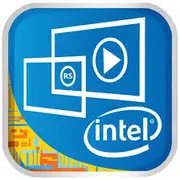Intel Core m3-8100Y

Intel Core m3-8100Y: Compact Energy Efficiency for Mobile Tasks
(Analysis valid as of April 2025)
1. Architecture and Process Technology: 14 nm in the Age of 3 nm
The Intel Core m3-8100Y processor, released in 2018, is still found in budget ultrabooks in 2025. Its Amber Lake Y architecture is based on an outdated 14-nm process, which contrasts with modern 3-nm chips from Apple and 4-nm solutions from AMD. However, this does not diminish its relevance in the compact device niche.
Key Features:
- 2 cores / 4 threads thanks to Hyper-Threading.
- Base frequency: 1.1 GHz, Turbo Boost up to 3.4 GHz.
- Intel UHD Graphics 615: 24 execution units, frequency up to 900 MHz.
- Cache: 4 MB L3.
Architectural Features:
- Low Power Design: optimized for minimal energy consumption.
- Passive cooling: fanless in most devices.
- Integrated graphics: supports 4K@60 Hz via DisplayPort, but weak for modern gaming.
Why 14 nm in 2025?
Laptop manufacturers continue to use the m3-8100Y due to its low cost. For example, Chinese brands like Chuwi or Teclast include it in $300–400 convertible tablets, offering a “basic Windows gadget.”
2. TDP 5 W: Silence and Compactness at the Cost of Performance
The 5 W TDP (Thermal Design Power) is the main "trick" of the processor. This allows for:
- The elimination of a cooler, making the device thinner than 10 mm.
- Increasing battery life to 10–12 hours in devices with a 40–50 Wh battery.
Downside:
- Under prolonged load (e.g., video rendering), the frequency drops to the base 1.1 GHz due to overheating.
- In multitasking (running a browser, Word, and Zoom simultaneously), noticeable stutters occur.
3. Performance: What Can the Core m3-8100Y Do in 2025?
Office Work:
- Google Docs, Microsoft 365: perfect smoothness even with 10+ tabs in Chrome.
- Zoom/Teams: handles HD video calls well, but 4K or background filters cause lag.
Multimedia:
- 4K Video: hardware decoding via Quick Sync, playback without issues.
- Photo Editors: Lightroom Mobile — yes, Photoshop with heavy layers — no.
Gaming:
- CS2 (720p, low settings): 25–30 FPS with drops.
- Stardew Valley, Among Us: stable 60 FPS.
- Cloud Gaming: optimal option via Xbox Cloud or GeForce Now.
Turbo Boost: Short-Term Burst
In Turbo mode (up to 3.4 GHz), the processor speeds up application launches, but after 20–30 seconds, it reduces frequency. For example, opening a 50 MB PDF takes 2 seconds instead of 4, but exporting the same file to PDF/A will be slower than on a Core i3-1215U.
4. Use Cases: Who is the m3-8100Y Suitable For?
- Students: for note-taking, webinars, and Netflix.
- Office Workers: dealing with email, documents, and spreadsheets.
- Travelers: long battery life and weight under 1 kg.
Who Is Not Suitable:
- Gamers (except for cloud gaming).
- Designers and video editors.
- Users working with virtual machines.
5. Battery Life: How 5 W Affects Operating Time
In laptops with the m3-8100Y and a 45 Wh battery (e.g., Lenovo Yoga 730), the operating time reaches 10–12 hours with:
- Screen brightness at 150 nits.
- Active use of the browser and office applications.
Energy-Saving Technologies:
- Intel SpeedStep: dynamic frequency adjustment.
- C-States: powering down unused cores.
- Panel Self Refresh: reducing GPU load with static images.
Tip: Disable Turbo Boost in power settings for an additional 1–2 hours of operation.
6. Comparison with Competitors: AMD, Apple, and Previous Intel Generations
- AMD Ryzen 3 7320U (4 cores, 15 W): 30% faster in multi-threaded tasks, but requires active cooling.
- Apple M1 (2020): 3–4 times higher performance with comparable TDP. Devices with M1 now start at $600 (new iPads).
- Intel Core i3-1115G4 (2020): dual-core, but with more powerful Iris Xe graphics.
Conclusion: The m3-8100Y falls behind modern counterparts but wins on price.
7. Pros and Cons: Balancing Capabilities
Strengths:
- Silent operation (no fan).
- Low device prices ($300–500).
- Support for Windows 11 and Linux.
Weaknesses:
- Outdated architecture.
- Limited multitasking.
- No support for PCIe 4.0 and Thunderbolt 4.
8. Recommendations for Laptop Selection
Types of Devices:
- Ultrabooks: for example, HP Pavilion Aero 11 (2025) for $450.
- Convertible Tablets: Chuwi HiPad X Pro with keyboard included ($320).
- Mini Notebooks: GPD Pocket 4 for compact lovers ($600).
What to Pay Attention To:
- RAM: at least 8 GB LPDDR3.
- Storage: SSD 256 GB (eMMC not recommended).
- Screen: IPS panel with Full HD resolution.
Advice: Avoid models with 4 GB RAM — Windows 11 will lag.
9. Final Conclusion: Who Is the m3-8100Y Made For?
The Intel Core m3-8100Y in 2025 is suitable for those who:
- Seek an extremely lightweight and quiet laptop.
- Are not willing to pay more than $500.
- Use the device for basic tasks.
Key Benefits: battery life, portability, affordability. If your needs do not exceed web surfing and document work — this processor is still relevant. However, for future upgrades, it's better to consider ARM models (e.g., Qualcomm Snapdragon X Elite) or Apple Silicon.
Basic
CPU Specifications
Memory Specifications
GPU Specifications
Miscellaneous
Benchmarks
Compared to Other CPU
Share in social media
Or Link To Us
<a href="https://cputronic.com/cpu/intel-core-m3-8100y" target="_blank">Intel Core m3-8100Y</a>